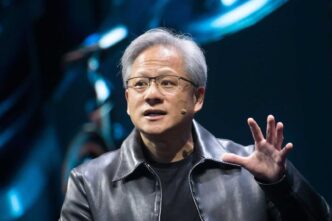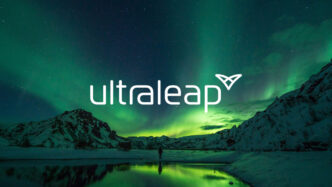The artificial intelligence boom is sparking an electricity crisis in the U.S., sending demand surging after years of stagnation. To keep their AI workloads running 24/7, tech giants are scrambling for new power sources—and many are betting big on nuclear fission. After decades of plant closures and regulatory delays, nuclear energy is suddenly getting a second wind. And it’s not just old-school reactors driving the comeback. A new generation of nuclear fission startups is reimagining atomic energy with safer, smaller, and more flexible reactor designs.
The appeal? Reliable, carbon-free power that can scale with rising AI energy needs.
Let’s break down the nuclear startups Big Tech is backing to future-proof their data centers.
Kairos Power: Google’s Bet on Safer Reactors
Google is eyeing a massive 500-megawatt power purchase from Kairos Power, a California-based startup building molten salt-cooled small modular reactors (SMRs). The first unit is expected online by 2030.
Kairos reactors use a special fluoride salt mixture that stays stable at high temperatures without needing pressurization. That makes the system inherently safer. Its fuel design also offers meltdown resistance, using carbon-ceramic coated pebbles that contain radioactive material more effectively.
With over $629 million in U.S. government funding—including $303 million from the Department of Energy—Kairos is moving quickly. In late 2024, it secured approval to begin construction of two 35-megawatt test reactors in Tennessee. The commercial models will eventually produce 75 megawatts each.
Oklo: Sam Altman’s Nuclear Ambition
OpenAI CEO Sam Altman has long supported nuclear innovation, and Oklo is his flagship bet. Backed by Altman’s AltC SPAC, Oklo is building compact SMRs cooled with liquid metal and designed to minimize nuclear waste.
While its first licensing attempt was rejected in 2022, Oklo is planning a resubmission in 2025. The company already landed a major power deal with Switch, promising up to 12 gigawatts by 2044.
Unlike most players, Oklo’s reactor is based on a proven DOE design. Investors include DCVC, Draper Associates, and Peter Thiel’s Mithril Capital. Despite regulatory hiccups, the momentum behind Oklo remains strong, especially with OpenAI eyeing it as a long-term energy partner.
Saltfoss: Floating Nuclear Reactors at Sea
Formerly known as Seaborg, Denmark-based Saltfoss is taking a unique approach: floating nuclear plants. Its Power Barge concept places up to eight molten salt reactors on a single ship, offering mobile, plug-and-play power solutions.
Saltfoss has raised nearly $60 million to date, with support from Bill Gates, Peter Thiel, and Unity co-founder David Helgason. The company also has a major partnership with Samsung Heavy Industries to build the ships and install the reactors.
For island nations, coastal cities, or disaster zones, floating nuclear plants could be game-changing—bringing resilient, clean energy where infrastructure is weak or compromised.
TerraPower: Bill Gates’ Flagship Nuclear Startup
Founded by Bill Gates, TerraPower is pushing forward with a new class of reactors called Natrium. These sodium-cooled reactors generate 345 megawatts and include built-in molten salt heat storage—allowing power to be dispatched even when demand spikes.
Construction for the first Natrium plant began in Wyoming in mid-2024, with support from Gates’ Cascade Investment fund, Khosla Ventures, CRV, and steel giant ArcelorMittal.
The Natrium design solves a key issue in nuclear energy: output flexibility. Even though reactors work best at a steady pace, TerraPower’s system stores excess heat and releases it later, mimicking a battery without the rare earth materials.
X-Energy: Amazon’s $700M Play in Nuclear
X-Energy, another SMR innovator, received a massive $700 million Series C-1 round in 2024, led by Amazon’s Climate Pledge Fund. At the same time, the company announced development deals for two new plants in the Pacific Northwest and Virginia, adding 300 megawatts of capacity.
X-Energy’s Xe-100 reactor uses high-temperature helium gas to cool uranium-packed “fuel pebbles”—each about the size of a billiard ball. The design operates at a higher efficiency compared to older water-cooled systems, and the reactor itself is passively safe.
While this type of gas-cooled reactor hasn’t seen widespread use in the U.S., X-Energy believes it offers the best mix of safety, modularity, and heat output for industrial and digital infrastructure alike.
Why Big Tech Loves Fission (Again)
The return to nuclear isn’t just about clean energy—it’s about predictable energy. AI systems don’t like surprises, and fluctuating grids powered by wind or solar can’t guarantee uptime. Fission offers:
- 24/7 baseload power with zero carbon emissions
- Next-gen modular reactors that are cheaper and easier to deploy
- Local energy resilience amid growing grid stress
What’s changed this time around is the tech. By moving away from massive, bespoke nuclear plants toward SMRs, startups are making nuclear energy cheaper, faster to build, and easier to maintain. Plus, with private capital now in play, innovation is moving much faster than it did under government-led programs.
The AI-Nuclear Feedback Loop
As OpenAI, Google, Meta, Microsoft, and Amazon scale their AI infrastructure, they’ll need vastly more electricity. Many data centers already rival small towns in energy use—and that’s before the next wave of AGI.
The result is a new industrial-age energy rush. Except this time, instead of coal or oil, the frontier is fission. And thanks to Big Tech’s capital and urgency, nuclear fission startups could finally deliver on their decades-old promise.













